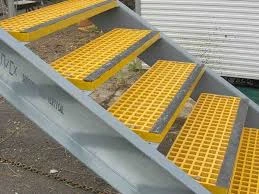
-
 Afrikaans
Afrikaans -
 Albanian
Albanian -
 Amharic
Amharic -
 Arabic
Arabic -
 Armenian
Armenian -
 Azerbaijani
Azerbaijani -
 Basque
Basque -
 Belarusian
Belarusian -
 Bengali
Bengali -
 Bosnian
Bosnian -
 Bulgarian
Bulgarian -
 Catalan
Catalan -
 Cebuano
Cebuano -
 China
China -
 China (Taiwan)
China (Taiwan) -
 Corsican
Corsican -
 Croatian
Croatian -
 Czech
Czech -
 Danish
Danish -
 Dutch
Dutch -
 English
English -
 Esperanto
Esperanto -
 Estonian
Estonian -
 Finnish
Finnish -
 French
French -
 Frisian
Frisian -
 Galician
Galician -
 Georgian
Georgian -
 German
German -
 Greek
Greek -
 Gujarati
Gujarati -
 Haitian Creole
Haitian Creole -
 hausa
hausa -
 hawaiian
hawaiian -
 Hebrew
Hebrew -
 Hindi
Hindi -
 Miao
Miao -
 Hungarian
Hungarian -
 Icelandic
Icelandic -
 igbo
igbo -
 Indonesian
Indonesian -
 irish
irish -
 Italian
Italian -
 Japanese
Japanese -
 Javanese
Javanese -
 Kannada
Kannada -
 kazakh
kazakh -
 Khmer
Khmer -
 Rwandese
Rwandese -
 Korean
Korean -
 Kurdish
Kurdish -
 Kyrgyz
Kyrgyz -
 Lao
Lao -
 Latin
Latin -
 Latvian
Latvian -
 Lithuanian
Lithuanian -
 Luxembourgish
Luxembourgish -
 Macedonian
Macedonian -
 Malgashi
Malgashi -
 Malay
Malay -
 Malayalam
Malayalam -
 Maltese
Maltese -
 Maori
Maori -
 Marathi
Marathi -
 Mongolian
Mongolian -
 Myanmar
Myanmar -
 Nepali
Nepali -
 Norwegian
Norwegian -
 Norwegian
Norwegian -
 Occitan
Occitan -
 Pashto
Pashto -
 Persian
Persian -
 Polish
Polish -
 Portuguese
Portuguese -
 Punjabi
Punjabi -
 Romanian
Romanian -
 Russian
Russian -
 Samoan
Samoan -
 Scottish Gaelic
Scottish Gaelic -
 Serbian
Serbian -
 Sesotho
Sesotho -
 Shona
Shona -
 Sindhi
Sindhi -
 Sinhala
Sinhala -
 Slovak
Slovak -
 Slovenian
Slovenian -
 Somali
Somali -
 Spanish
Spanish -
 Sundanese
Sundanese -
 Swahili
Swahili -
 Swedish
Swedish -
 Tagalog
Tagalog -
 Tajik
Tajik -
 Tamil
Tamil -
 Tatar
Tatar -
 Telugu
Telugu -
 Thai
Thai -
 Turkish
Turkish -
 Turkmen
Turkmen -
 Ukrainian
Ukrainian -
 Urdu
Urdu -
 Uighur
Uighur -
 Uzbek
Uzbek -
 Vietnamese
Vietnamese -
 Welsh
Welsh -
 Bantu
Bantu -
 Yiddish
Yiddish -
 Yoruba
Yoruba -
 Zulu
Zulu
Feb . 13, 2025 05:56
Back to list
Fans & Dampers & Demisters
Fiberglass clarifier systems have emerged as a transformative technology in the realm of water treatment, addressing both efficiency and environmental concerns with cutting-edge innovation. As the demand for clean and sustainable water solutions continues to grow, industries and municipalities are increasingly turning to fiberglass materials for their clarifiers, known for their robust performance and durability. The following insights delve into the reasons why fiberglass clarifier systems are setting new benchmarks in water treatment and solid waste management.
Furthermore, fiberglass clarifier systems align perfectly with environmental sustainability goals. The production process of fiberglass has a lower environmental impact compared to traditional materials, and its longevity contributes to a reduced ecological footprint over time. Facilities aiming for green certifications or sustainable operations find fiberglass systems to be an eco-friendly choice that supports their broader environmental objectives. The expertise backing fiberglass technology is underscored by extensive research and development in composite materials. Industry pioneers in fiberglass manufacturing have harnessed decades of material science advancements to produce clarifier systems that meet rigorous performance standards. These systems undergo stringent testing and quality assurance measures, providing stakeholders with confidence in their reliability and efficacy. Testimonials from industry-leading environmental engineers and water treatment specialists often emphasize the trustworthiness and authority that fiberglass clarifier systems command in the field. From a safety perspective, fiberglass is an inert material that does not release harmful toxins into the water. This characteristic is crucial for facilities where water safety is paramount, such as those treating potable water supplies. By eliminating contamination risks associated with some traditional materials, fiberglass systems present an additional layer of safety assurance, which is highly valued by regulatory bodies and public health authorities. In conclusion, fiberglass clarifier systems represent a progressive leap forward in water treatment technology, merging advanced material science with practical efficiency enhancements. Their durability, ease of installation, design flexibility, environmental benefits, and proven safety records make them an authoritative choice for modern water treatment facilities. As industries continue to seek innovative solutions for efficient and sustainable water management, fiberglass clarifiers are poised to play a pivotal role in setting industry standards and driving future advancements.


Furthermore, fiberglass clarifier systems align perfectly with environmental sustainability goals. The production process of fiberglass has a lower environmental impact compared to traditional materials, and its longevity contributes to a reduced ecological footprint over time. Facilities aiming for green certifications or sustainable operations find fiberglass systems to be an eco-friendly choice that supports their broader environmental objectives. The expertise backing fiberglass technology is underscored by extensive research and development in composite materials. Industry pioneers in fiberglass manufacturing have harnessed decades of material science advancements to produce clarifier systems that meet rigorous performance standards. These systems undergo stringent testing and quality assurance measures, providing stakeholders with confidence in their reliability and efficacy. Testimonials from industry-leading environmental engineers and water treatment specialists often emphasize the trustworthiness and authority that fiberglass clarifier systems command in the field. From a safety perspective, fiberglass is an inert material that does not release harmful toxins into the water. This characteristic is crucial for facilities where water safety is paramount, such as those treating potable water supplies. By eliminating contamination risks associated with some traditional materials, fiberglass systems present an additional layer of safety assurance, which is highly valued by regulatory bodies and public health authorities. In conclusion, fiberglass clarifier systems represent a progressive leap forward in water treatment technology, merging advanced material science with practical efficiency enhancements. Their durability, ease of installation, design flexibility, environmental benefits, and proven safety records make them an authoritative choice for modern water treatment facilities. As industries continue to seek innovative solutions for efficient and sustainable water management, fiberglass clarifiers are poised to play a pivotal role in setting industry standards and driving future advancements.
Next:
Related Products









